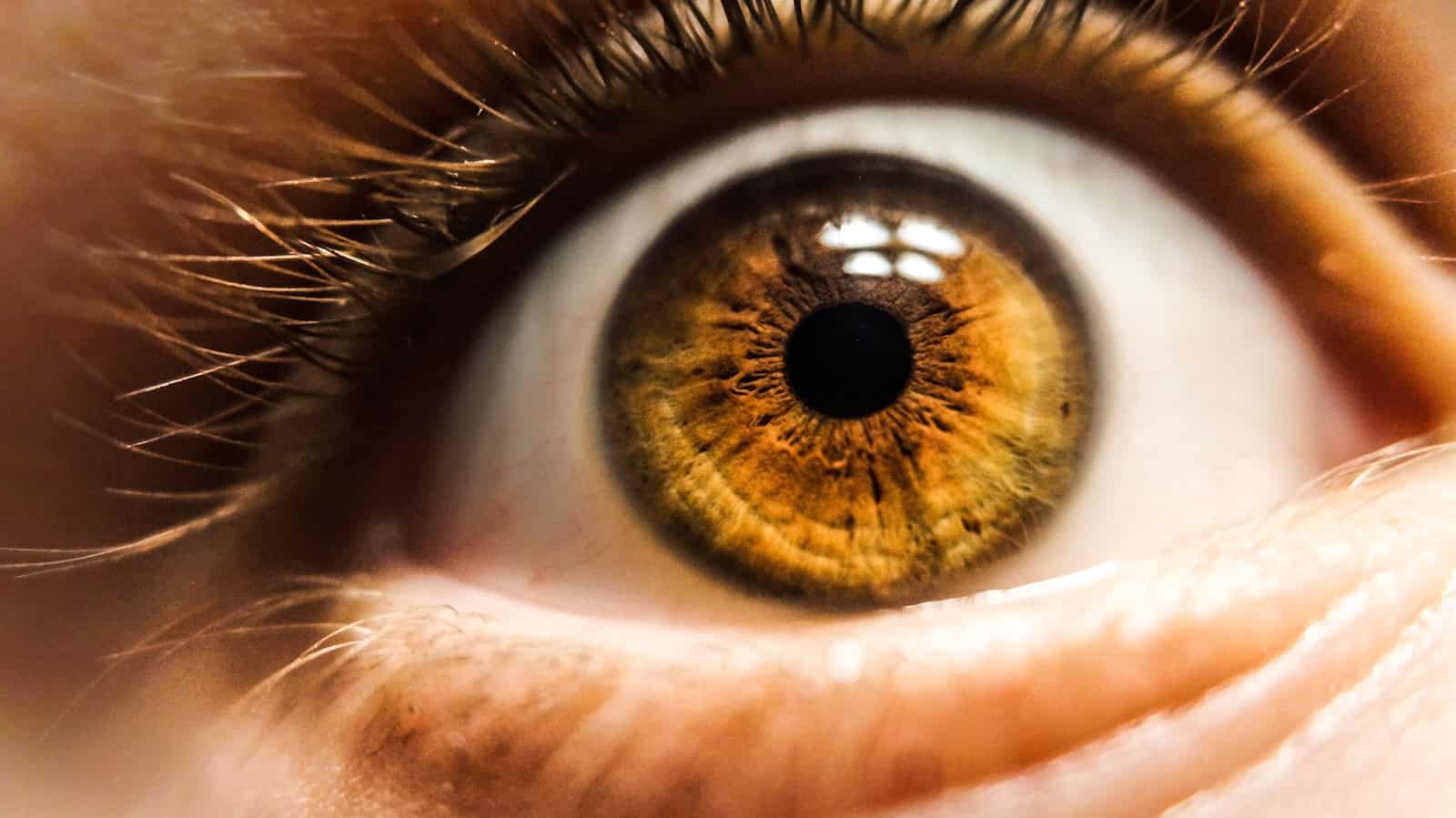A team of scientists from the University of California, Berkeley and the University of Washington has stunned the world of visual science by revealing a new color—one that no human has ever seen before. Dubbed “Olo,” this groundbreaking hue isn’t just rare—it’s literally impossible to display on any screen, print, or digital medium.
What makes Olo so special? It’s not a pigment or a blend of light in the traditional sense. Instead, it’s a perceptual phenomenon, engineered by hacking the human visual system itself.
What Exactly Is “Olo”?
Olo is described as a hyper-saturated teal or turquoise-like color that lies outside the standard visual spectrum we typically experience. But here’s the twist—it’s not a pigment you can mix, nor a color you can display on any RGB screen. Instead, it exists only when a specific group of cells in your eye are individually and precisely stimulated.
The name “Olo” comes from binary: 010. This sequence corresponds to the activation of only the M-cones (medium-wavelength photoreceptors responsible for detecting green) in the human retina—while suppressing input from the L-cones (red) and S-cones (blue). Normally, all color perception arises from some combination of these three cones firing together. But with Olo, scientists isolated just one cone type, creating a wholly new sensory experience.
The color “olo” doesn’t have a standard hex code like other colors. Scientists described it as a teal-ish, highly saturated blue-green color, but it is not visible to the naked eye. The closest hex code that can be used to represent olo is #00ffcc.
| Closest Example Of Olo |
|---|
| *Note the actual color cannot be seen on a display/monitor |
How Scientists Made People See It
To create the experience of Olo, researchers used a device called “Oz,” a custom-built, laser-based retinal projector capable of targeting individual photoreceptor cells. First, the layout of each person’s retina had to be mapped using adaptive optics imaging, down to the location of individual cones. Then, by firing laser pulses directly onto the M-cones—and avoiding the nearby L- and S-cones—they created an experience never before felt by the human visual system.
So far, only five people have seen Olo, including members of the research team. All describe the color as unlike anything they’ve ever experienced: intense, vivid, and uncategorizable. One participant compared it to “a memory of a color that doesn’t exist.”
Why You’ll Never See Olo on a Monitor
Our digital displays are built around RGB color mixing—red, green, and blue light combined in various ways to simulate every color in the visible spectrum. But that system relies on stimulating multiple cones in predictable ratios. Olo, however, arises when only one type of cone is stimulated, bypassing the mixing process entirely.
Because no screen or printed material can isolate just one cone type, Olo can’t be reproduced with current technology. Even augmented or virtual reality headsets can’t simulate it. To see Olo, your eye must be directly and precisely manipulated with laser light.
Why This Matters: Beyond the Spectrum
The discovery of Olo pushes the boundaries of our understanding of human perception. It challenges the long-standing assumption that all perceivable colors can be derived from RGB mixing, a concept foundational to everything from art to display technology.
This opens doors for:
- New color theory models that factor in the direct stimulation of single cone types.
- Better understanding of color blindness and how alternate visual pathways might be accessed or simulated.
- Development of novel visual therapies for people with damaged or missing photoreceptors.
- Scientific insights into consciousness and perception—how our brains interpret the raw data coming from our eyes.
A Glimpse Into an Expanded Visual World
Olo may never show up in a paint swatch or a Photoshop palette, but it’s a powerful reminder that our perception of reality is limited—not by the world itself, but by how our senses interpret it. For now, experiencing Olo requires high-tech gear and direct retinal manipulation, but it hints at a future where the boundaries of human vision could be pushed far beyond what we’ve ever imagined.
As technology evolves, we may not just enhance what we can see—we may learn there are entire dimensions of color still waiting to be discovered.
Key Takeaways
- Scientists in the US say they have discovered a new color called ‘Olo.’
- ‘Olo’ is an intense teal not seen before by the human eye.
- The discovery could change how we think about color perception.
Discovery Of ‘Olo’: A New Color In Human Vision
Scientists have identified a color never before seen by the human eye. Using advanced technology, they created a unique hue named ‘Olo’ by carefully controlling how light stimulates the eye’s photoreceptors.
Origins And Research Teams
Researchers at the University of California, Berkeley, led the study. They worked in partnership with vision scientists from the University of Washington. Their backgrounds in color vision and adaptive optics guided the project.
The team aimed to explore limits of human perception. They wanted to know if the human retina could process signals not seen in nature. Their years of research focused on the basic science behind how people see color.
By combining expertise from both universities, the group designed new experiments. Their collaboration also included experts in laser technology and optics, making possible the precise control needed for the study.
Methodology Behind The Discovery
To trigger the perception of ‘Olo’, the scientists used adaptive optics and focused laser pulses. They pinpointed specific spots on the human retina, targeting the photoreceptors responsible for color vision. These cells—known as L, M, and S cones—respond to long, medium, and short wavelengths.
By only stimulating the M cones, the team produced an unprecedented color signal. They fine-tuned the laser to bypass input from the other two types of cones. This approach allowed subjects to report seeing a new hue not found in nature or in regular displays.
The experiments required careful safety checks. Scientists ran controls to ensure the color perception was real and not a visual illusion. Their setup pushed the boundaries of what the human visual system can experience.
Unique Properties Of The ‘Olo’ Color
‘Olo’ does not appear on the standard visible spectrum. Test subjects described it as a blue-green shade but different from anything else they had seen. The name comes from binary code “010,” reflecting only the M cones’ activation among the three types.
Unlike ordinary colors, ‘Olo’ can’t be displayed on screens or mixed with existing pigments. It is a new hue in vision science, only visible through the precise stimulation created by the research setup.
This finding challenges previous ideas about the limits of human color vision. It shows that the retina can perceive signals outside natural experience, adding a previously unknown option to the list of human-visible colors.
Understanding ‘Olo’ In The Context Of Color Perception
Scientists at UC Berkeley have introduced “Olo,” a color seen only when specific processes in the human eye are triggered. This rare experience challenges everyday beliefs about color and how people see.
How The Human Eye Detects Colors
Color vision begins in the retina with three main types of cone cells: S cones detect short wavelengths (blue), M cones handle medium wavelengths (green), and L cones respond to long wavelengths (red). Light enters the eye and stimulates these cones in unique patterns, letting people see a wide range of hues.
Normally, the brain mixes signals from all three types of cones to guess a color. “Olo” only appears when lasers target a single cone type, often the M cone, in ways natural light cannot do. This isolation creates a strong color signal that skips regular pathways, which may explain why “Olo” looks so fresh and unfamiliar.
People cannot see “Olo” during daily life since typical light sources and objects do not trigger the same pattern. The discovery uses new laser techniques, showing just how much human color vision can be shaped by how cones are activated.
Comparisons With Existing Colors
“Olo” is reported as a highly saturated teal or blue-green, sometimes called “peacock green.” Unlike everyday teal, “Olo” does not fit neatly between blue and green on the visible spectrum. Instead, it lies in a spot that normal mixing of standard colors cannot reach.
Researchers used lasers to excite just one cone type at a time. This makes “Olo” stand out as a color people cannot match with paint, digital screens, or natural objects. Describing “Olo” invites comparisons to other colors, but none quite match its intensity or unique shade.
Here’s a table comparing key features:
| Color | Hue Position | How Seen |
|---|---|---|
| Teal | Blue-green mix | Common sources, screens |
| Peacock Green | Deep blue-green | Nature, paint |
| Olo | Unique blue-green | Laser to a single cone |
“Olo” highlights gaps in color language and technology, pointing to the limits of current color reproduction.
Implications For Color Blindness and Visual Experience
Many kinds of color blindness stem from missing or faulty cone cells. Since “Olo” depends on isolating M cones, people with absent or low-functioning M cones might not experience this new color. Those with deuteranopia (green-blindness) may never see “Olo” at all, while those with normal color vision but reduced sensitivity might sense a slightly different shade.
This discovery suggests that some colors could remain invisible not just due to technology, but because of biology. It raises new questions about how everyone’s visual experience can differ, even when looking at the same scene.
Extraordinary cases like “Olo” show that the standard chromatic mechanism of seeing color—blending signals from S, M, and L cones—is not the only way the eye might respond. For people with typical vision, “Olo” proves the visual system can be pushed to new limits with the right tools.
Potential Applications In Digital And VR Platforms
Standard screens and printers mix red, green, and blue to produce colors. Olo presents a challenge: digital devices cannot reproduce it, as they depend on stimulating more than just a single cone type at once. This limitation matters for websites, apps, and games, where color design relies on what devices can actually display.
In VR, scientists could use targeted light sources or new display hardware to trigger cone cells individually. This method could introduce viewers to colors outside the regular digital palette, offering richer and more personalized virtual experiences.
Privacy issues, such as tracking user preferences through cookies, will be important if “Olo” or related colors appear in apps or platforms in the future. Still, the biggest focus lies on hardware advances. If engineers find safe ways to mimic the precise laser effect, people might see “Olo” in artificial settings for the first time outside the lab.
Until then, “Olo” remains a rare phenomenon, visible only with special setups and not everyday electronics. The discovery opens new directions in both understanding and using color.
Frequently Asked Questions
Scientists used lasers to create and identify a new color called “Olo,” which falls between blue and green. The discovery raises questions about perception, digital reproduction, and uses in different fields.
How is the newly discovered color ‘Olo’ different from existing colors?
“Olo” is described as an intensely saturated blue-green. Unlike typical teals, it appears more vivid and distinct because scientists could control how it reaches the eyes. People who have seen it report that it looks noticeably separate from common colors on the spectrum.
Can the new color ‘Olo’ be accurately reproduced in digital formats?
Current digital screens can’t display “Olo” accurately. Standard monitors use combinations of red, green, and blue light to make colors, but “Olo” relies on a special visual effect produced directly in the eye with lasers. As a result, people can’t see this exact color from a regular screen.
What implications does the discovery of ‘Olo’ have for color theory?
The existence of “Olo” challenges long-standing beliefs about how many colors the human eye can see. It suggests that some colors may be hidden unless certain techniques are used. This discovery may prompt scientists to rethink theories about vision and color perception.
What techniques were used to identify the new color ‘Olo’?
Researchers used precise laser technology to stimulate the eyes in a controlled way. They targeted specific cells in the retina, making it possible for some people to recognize this unique color. Only a handful of people have seen it so far, under strict laboratory settings.
Are there any practical applications for the color ‘Olo’ in art or industry?
Right now, “Olo” cannot be used in traditional art or most industries because it can’t be recreated with paints or digital devices. However, there may be future uses in fields like vision science or color blindness research, where understanding how the brain sees color is important.
What is the scientific explanation behind the perception of the color ‘Olo’?
“Olo” is visible only when certain wavelengths of light hit the eye in a very specific way. Lasers isolate and combine signals from cells responsible for seeing color, bypassing how we usually mix colors. This direct stimulation makes a new visual experience that standard methods can’t produce.







